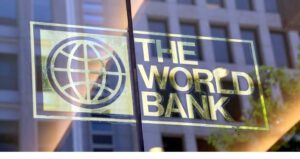Banking malware attacks rose by 32% in Q2, 2021 — Report
The latest study on cybercrime landscape by Kaspersky research has disclosed that the top malware families such as ransomware, financial/banking trojans, and crypto-miner malware have increased in Nigeria in quarter (Q2) by 32 per cent up from the first quarter (Q1) of 2021.
According to the study when comparing Q1 2021 with Q2 2021, Kaspersky saw a 24 per cent increase in ransomware in Q2 2021 in South Africa, as well as an increase of 14 per cent in crypto-miner malware. In Kenya, Kaspersky saw a large increase in financial/banking trojans in Q2 2021 when compared to the figures for Q1 2021 – a 59 per cent increase in Kenya.
It says the financial services sector remains a top targeted industry in Africa when it comes to cybercriminal activity and such cyberthreats – not surprising when one considers the digital first approach this sector continues to take, driven by the needs and expectations of its customers.
Principal Security Researcher at Kaspersky, David Emm said, “It is relatively easy for a hacker to target an individual and capture passcodes, one-time passwords, and install malware on their computers to get financial information. Increasingly, this is expanding to financial institutions given the sheer number of new entrants in the market emerging. For hackers, online or cyber fraud offers direct monetisation of an attack and gives them access to money as quickly as possible.”
Financial based malware and cyberattacks are also becoming more targeted, complicated, and difficult to prevent, and with digital transformation progressing at a rapid rate within such a sector, there is no shortage of attack surfaces for cybercriminals to exploit.
“In a world where cybercrime remains rife and is only fuelled by aspects like the pandemic, there is never a moment one should not consider the implications of a cyberattack, especially as the cyberthreat landscape evolves and become even more targeted and sophisticated than it was a mere few years ago. Cybercrime is a business. This means that consumers and companies alike must remain vigilant against an increasing attack surface. Not only does this entail a more focused cyber training approach for staff within an organisation, but also using the latest technologies that feature artificial intelligence and machine learning for accurate and proactive protection and prevention in real-time,” Emm added.
When looking at the general cyberthreat landscape as it impacts consumers and businesses, Kaspersky research shows that in 2020, worldwide, approximately 10 per cent of computers experienced at least one malware attack. Interestingly, in some African countries, including South Africa, the figure was only slightly under the global 10per cent average, making the African region comparable to that of North America or Europe in terms of cyberattacks.
On some parts of the continent, in countries like Liberia, Tunisia, Algeria and Morocco as examples, Kaspersky has seen a slightly higher rate, while other parts show a lower rate – a 5 per cent or 6 per cent average. For the first quarter of 2021, the figures are only slightly lower than 10 per cent, both in relative and absolute terms.
“Generally speaking, and based on our research, Africa has the same hit rate as we would see for other parts of the globe when it comes to cyberattacks and activity.
“This only emphasises that the cyber threat landscape truly does incorporate the whole globe where no continent or country is free of this growing danger and where all consumers, businesses and industries alike need to pay attention to effective cybersecurity measures – and especially during the current pandemic and resultant turbulent times,” Emm concluded.




